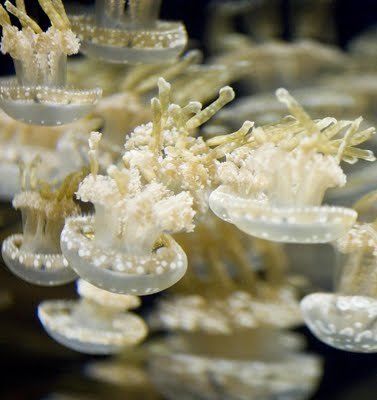|
|
Jellyfish
|
Scyphozoan jellyfish stings range from a twinge to tingling to savage agony. Most jellyfish stings are not deadly, but stings of some species of the class Cubozoa and the Box jellyfish, such as the famous and especially toxic Irukandji jellyfish, can be deadly. Stings may cause anaphylaxis, which can be fatal. Medical care may include administration of an antivenom.
In 2010 at a New Hampshire beach, pieces of a single dead lion's mane jellyfish stung between 125 and 150 people. Jellyfish kill 20 to 40 people a year in the Philippines alone. In 2006 the Spanish Red Cross treated 19,000 stung swimmers along the Costa Brava.
• Treatment
The three goals of first aid for uncomplicated jellyfish stings are to prevent injury to rescuers, deactivate the nematocysts, and remove tentacles attached to the patient. Rescuers need to wear barrier clothing, such as pantyhose, wet suits or full-body sting-proof suits. Deactivating the nematocysts (stinging cells) prevents further injection of venom.
|
|









